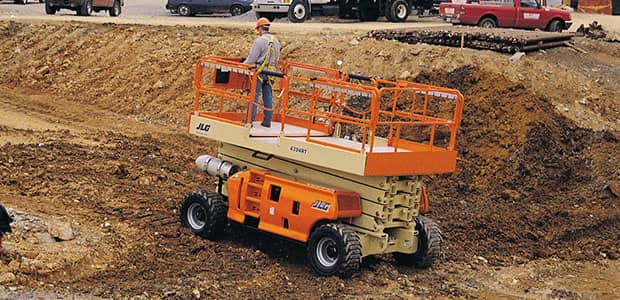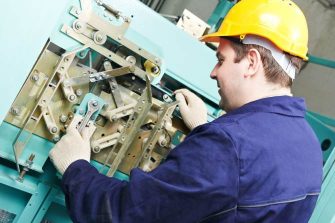Comprehending System Lift Capacities: Crucial for Reliable Lift Service
Comprehending System Lift Capacities: Crucial for Reliable Lift Service
Blog Article
A Comprehensive Method to Enhancing Efficiency Via Strategic Lift Fixing Approaches
In the realm of center management, the effectiveness and reliability of lifts play a crucial duty in guaranteeing smooth operations. A calculated and systematic method to raise repair and upkeep is imperative to make the most of efficiency and minimize downtime. By resolving common lift problems, implementing proactive maintenance measures, and establishing targeted repair service plans, centers can optimize their lift systems to operate at peak performance degrees. Nonetheless, the trick to attaining sustained improvement depends on using data-driven insights to notify decision-making procedures and drive continual improvement. This extensive technique to boosting lift efficiency with strategic repair methods holds the assurance of not just improving functional effectiveness but also prolonging the life expectancy of lift systems.
Value of Lift Efficiency Optimization
Recognizing the relevance of enhancing lift efficiency is important for ensuring effective and dependable upright transportation systems in numerous structures and structures. Lifts are crucial elements of modern framework, offering upright movement for occupants and products within buildings of differing elevations. By enhancing lift efficiency, building proprietors and facility supervisors can enhance customer experience, enhance power efficiency, and rise general operational performance.
Reliable lift performance optimization includes numerous elements, consisting of rate, capability, energy usage, safety, and upkeep needs. Correctly maximized lifts can reduce wait times for users, especially in high-traffic structures, leading to enhanced contentment and productivity. In addition, optimized lifts add to energy financial savings by utilizing sophisticated control systems and modern technologies that minimize power consumption without jeopardizing performance.

Identifying Common Lift Issues
Identifying typical lift concerns is important for maintaining the functional efficiency and security of vertical transport systems in buildings. Identifying these issues can assist protect against malfunctions, lower downtime, and extend the life expectancy of the lift devices. One typical trouble that structure managers and maintenance groups commonly experience is uneven or jerky activities throughout procedure. This issue can be a sign of issues with the lift's electric motor, control system, and even the positioning of the lift car.
One more prevalent lift issue is strange noises emanating from the lift shaft or machinery room. These sounds can range from grinding or scraping sounds to loud clunking noises, every one of which may indicate underlying mechanical concerns that require instant attention. Additionally, regular door breakdowns, such as doors not opening or closing correctly, can interrupt the smooth circulation of travelers and pose security threats.
Applying Proactive Upkeep Actions
To maximize the performance and long life of lift systems, positive maintenance measures play a vital function in guaranteeing functional reliability and safety and security. lift breakdown. Executing positive maintenance involves methodically evaluating, maintenance, and fixing elements before they fail, thus avoiding pricey downtime and potential safety hazards. On a regular basis scheduled evaluations can aid recognize small issues before they escalate into significant troubles, eventually prolonging the life-span of lift systems
One trick facet of positive upkeep is creating a detailed maintenance timetable based on producer referrals and sector best practices. This routine should describe jobs such as lubrication, placement checks, and element substitutes at specified periods. Furthermore, applying condition tracking strategies, such as vibration evaluation and thermal imaging, can aid identify early indicators of wear or breakdown.
In addition, training maintenance personnel on correct evaluation strategies and preventive maintenance treatments is essential for the successful execution of aggressive maintenance steps. By cultivating a society of proactive upkeep within an organization, lift systems can run at peak efficiency levels, lessening interruptions and making certain the security of customers.
Creating Targeted Repair Strategies
Upon assessing the upkeep records and efficiency data, the engineering group can create targeted repair plans to deal with particular issues and optimize lift system capability. These fixing strategies are tailored to the determined problems, making sure that resources are focused on fixing important problems efficiently. By focusing on fixings based upon their influence on performance and security, the targeted repair work plans aid decrease downtime and upkeep costs while making the most of the lift system's integrity.
Developing these strategies involves a thorough analysis of the lift system elements, consisting of motors, cable televisions, brakes, and control systems. With this in-depth assessment, the engineering team can determine the origin causes of any breakdowns or degradation in performance. This details is then used to produce a roadmap for the fixing process, detailing the needed actions, timeline, and resources required to address each issue properly.
Additionally, targeted repair strategies may consist of preventative procedures to boost the lift system's longevity and efficiency. By proactively dealing with potential problems before they intensify, these plans add to the total performance and security of the lift system.
Making Use Of Data-Driven Insights
Taking advantage of the power of data-driven understandings is vital in maximizing lift system efficiency link and maintenance effectiveness. These predictive upkeep approaches help stop unanticipated break downs, decrease downtime, and prolong the life expectancy of lift systems.

Final Thought
In conclusion, maximizing lift performance is vital for guaranteeing performance and safety in buildings. By recognizing common lift concerns, implementing proactive upkeep actions, developing targeted repair work strategies, and using data-driven insights, organizations can boost performance and minimize downtime. It is essential to take an extensive approach to raise repair service approaches to maximize functional efficiency and make sure the longevity of lift systems.
By attending to typical lift concerns, executing positive maintenance steps, and establishing targeted repair work plans, centers can maximize their lift systems to run at peak efficiency degrees.Another widespread lift concern is basics odd noises emanating from the lift shaft or machinery area.Upon analyzing the maintenance records and performance data, the design group can establish targeted repair strategies to resolve details problems and optimize lift system functionality. By focusing on repair services based on their impact on efficiency and security, the targeted repair service strategies help decrease downtime and maintenance expenses while taking full advantage of the lift system's dependability.
It is essential to take an extensive approach to lift repair methods to make best use of operational efficiency and make sure the longevity of lift systems.
Report this page